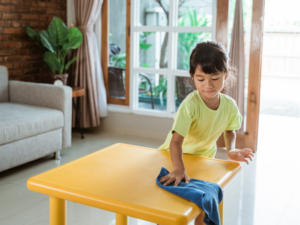Occupational wellness for caregivers is often forgotten. Occupational therapy empowers the individual to overcome any barriers that are getting in the way of living their best life.
For children, this includes feeling proud of brushing your teeth all by yourself, going on a family vacation with your parents, having the tools to be successful attending a school party, and being able to keep up with the neighborhood friends on their bikes or scooters. These meaningful activities and occupations bring a sense of purpose, joy, and belonging.
As important as it is to ensure occupational wellbeing and participation for the child, it is equally as crucial promoting occupational wellness for families and caregivers. If you have employees that are caring for children or young adults, consider these three areas of occupational wellbeing:
Occupational Wellness includes Getting Sleep
Sleep is a crucial daily occupation that affects everything else we do daily. For example, sleep significantly impacts occupational wellness by affecting work performance, problem-solving skills, and executive function. One way to support a caregiver is to offer flexible work hours to accommodate their unique schedule with their child. Another option is providing resources for respite care for parents. Respite care allows caregivers time to have a break to care for themselves.
Meaningful Leisure Activities
Play isn’t just for the kids. Grownups need to play, too! For example, adults engaging in meaningful roles and routines that give them a sense of purpose. They are more equipped mentally and emotionally to care for their child (and perform better at work). Promoting occupational wellness includes allowing space for and promote engagement in volunteer opportunities. Employers should offer time off to take vacations or participate in religious or community events. You can facilitate forming workgroups that focus on a specific hobby or activity (knitting club, walking group, parent support group, etc.). This allows caregiving employees to engage in leisure occupations that bring them joy and meaning.
Physical/Emotional Wellbeing
Offer healthy snack options at meetings, have team meetings outside, or organize a weekly meditation session. Promoting physical and emotional health will improve overall occupational wellness, and your employees caring for a child will feel appreciate.




